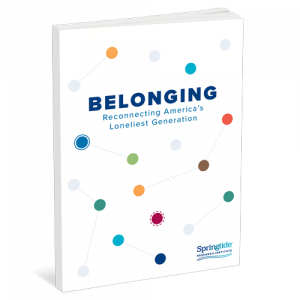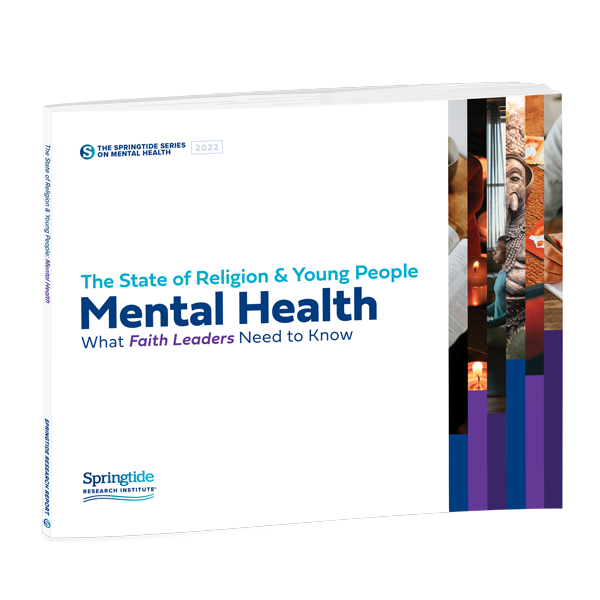Religious and Spiritual Practice: How Faith Leaders Can Support Gen Z Mental Health
May is Mental Health Awareness Month, and we’ll be sharing tips from our insights from young people on mental health. For our report The State of Religion & Young People 2022: Mental Health—What Faith Leaders Need to Know, nearly 10,000 young people answered survey questions about their beliefs, practices, behaviors, relationships, and their mental health. In addition, over 100 young people participated in interviews about the same themes.
Our data showed that while young people may not visit a house of worship regularly, they do report engaging in religious and spiritual practices – and it can make a difference in how they feel. Nearly two-thirds of young people are wholly or largely absent from religious services. Yet, 47% of the young people we surveyed said they engage in art as spiritual practice at least weekly, and 44 % say being in nature serves as spiritual practice for them at least weekly.
How often do you attend religious services, either in person or virtually?
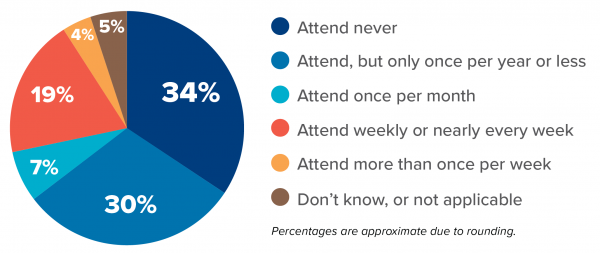
How often do you engage in the following as religious or spiritual practices?
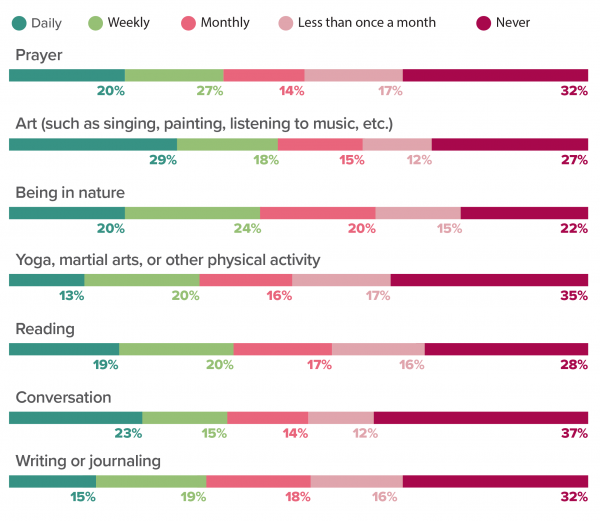
Our data also showed that in particular prayer and attending religious services were associated with greater flourishing. Seventy-four percent of young people who say they pray daily also say they’re flourishing.
Prayer Practices
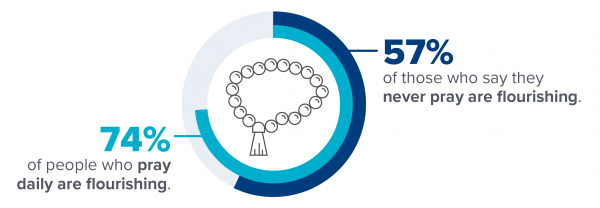
Religious Attendance
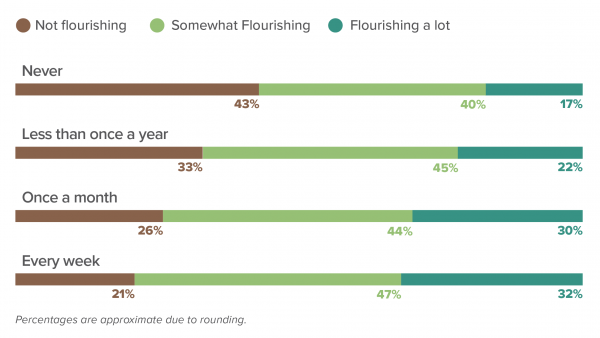
One of the ways faith leaders can help support young people’s mental health is by helping them connect to religious and spiritual practices. Below is an exercise for those currently serving faith communities:
- Identify the practices on the list above that you currently offer or support in your community in some form. For each one, write about how young people could be exposed to them or be invited to participate in them.
- Then note which practices you don’t offer or support currently but could create or partner with another organization to help create. List specific steps you could take to ensure that young people have the opportunity to undertake one or two additional practices.
Within or outside of faith communities, leaders connecting young people to religious and spiritual practice is a powerful to way make them feel like they belong, which positively impacts mental health.
Springtide’s Belongingness Process identifies three levels or building blocks for creating belonging for young people – being noticed, named and known. This means a leader focuses on noticing young people, working to get to know them, and then investing in building meaningful relationships with them.
One of the ways to get to know them better is to understand more about what their religious and spiritual practice looks like for them, introduce them to practices with which may be less familiar, or teach them more about the ones that already resonate.
You can find out more about the Belongingness Process in Belonging: Reconnecting America’s Loneliest Generation
Dive into more research-based insights with The State of Religion & Young People 2022: Mental Health—What Faith Leaders Need to Know.




